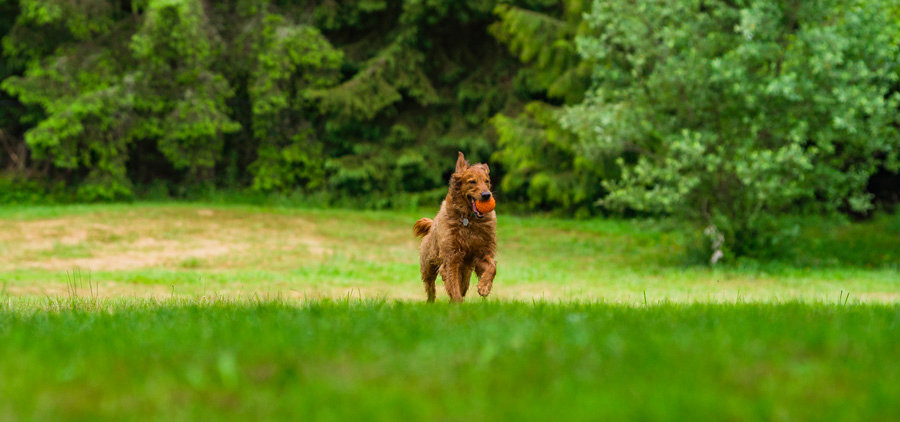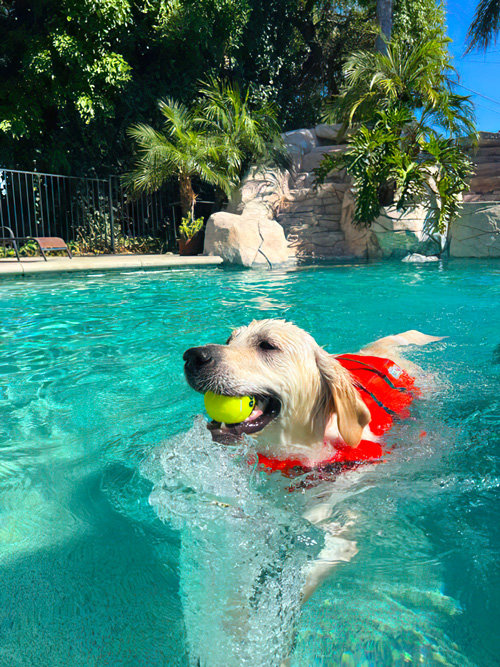Dog Food Aggression: Why You Shouldn't Punish It

Does your dog ever growl when you walk by their food dish? Maybe they get possessive of treats, carrying them far away and giving you side-eye when you start to approach — or snarling at your other pets or children if they get too close.
These are symptoms of food aggression, a common (yet scary) behavior problem many dog owners face. Per Sniffspot’s proprietary research, 25% of dog guardians report having a dog that has had food aggression.
Does your dog growl or snap when you approach their food bowl? Many owners wonder how to punish food aggression in dogs, but punishment often makes things worse. This article explores why dogs develop food aggression, offering effective and humane training techniques. We'll cover prevention strategies, and what to do if your dog already shows signs of guarding their food. Let's create a positive mealtime experience for everyone.
You’ve got this. Let’s dive in!
What is food aggression?
Food aggression is a form of resource guarding. Resource guarding is pretty much exactly what it sounds like. It’s when a dog “guards” a valuable resource, such as a toy or a food bowl, through behaviors like running away with the item, growling, or biting. Other signs of resource guarding include stiff behavior and side eye.
Key Takeaways
- Resource guarding, which includes food aggression, is a natural canine behavior: While it's normal to a degree, it's crucial to manage this behavior for a safe and happy home. Focus on positive reinforcement and creating a stress-free mealtime environment for your dog.
- Early identification and intervention are important: Recognizing subtle signs like quick gobbling or stiffening can prevent escalation to more serious behaviors. If you see concerning signs or are unsure how to help your dog, consult a vet or certified trainer.
- Positive reinforcement methods are the most effective way to address food aggression: Counter-conditioning and desensitization can help your dog develop positive associations with people near their food. Training games like the "trade game" can also build trust and reduce guarding behaviors.
Food aggression is specific to food and treats
Food aggression, as the name implies, is specific to food. If your dog is displaying aggressive behaviors — like growling, lunging or biting — in non-food situations, then something else is going on. You’ll want to call your vet and a qualified trainer to help make sense of your pup’s behavior.
Resource guarding can be a natural canine instinct!
Food aggression is quite common in dogs. To a degree, resource guarding is a natural behavior inherited from your pet’s canine ancestors. Although your domestic dog doesn’t need to guard their food like this (if only we could tell our pets we’ll always take care of them!) the instinct might remain.
And it makes sense — think about if someone kept trying to stick their fork onto your plate to steal pieces of your favorite meal. You’d probably guard your food by showing signs of aggression, too!
While it often comes from a natural place, resource guarding still needs to be dealt with in order for your dog to thrive in modern human society — especially if they struggle with severe food aggression.
Medical Reasons for Food Aggression
Before we dive into training tips, it’s important to rule out any underlying medical reasons for your dog’s food aggression. Sometimes, pain or discomfort can make dogs irritable, especially at mealtimes. If *you* had a stomach ache, you probably wouldn’t want anyone hovering around while you ate either!
Several health issues can contribute to this behavior. Dental problems, like a cracked tooth or gum inflammation, can make chewing painful. Gastrointestinal issues can also cause discomfort, leading to resource guarding. Even conditions like arthritis could make it painful for your dog to move away from their bowl if they feel threatened, increasing the likelihood of aggressive behavior.
If your dog suddenly develops food aggression, or if their aggression seems unusually intense, schedule a check-up with your veterinarian. They can assess your dog’s overall health and determine if a medical condition might be contributing to the problem. It’s always best to address any potential medical issues before starting behavioral training. Treating the underlying cause can sometimes resolve the food aggression completely.
Do bad experiences create food aggression?
It’s not necessary for a dog to have a negative experience around food, like fending for themselves on the street as a stray, to develop food aggression. Those sorts of circumstances can definitely exacerbate the problem though.
Every dog is an individual, and some pets are more likely to resource guard than others due to a combination of genetic and experiential factors. If your dog shows signs of food aggression or other aggressive tendencies, it does not mean anything bad has happened to them or that you’ve failed as an owner!
Early Negative Experiences
It’s a common misconception that dogs develop food aggression because of past trauma, like having to steal food to survive on the streets. While difficult situations like this can certainly make resource guarding worse, they aren’t usually the root cause. Even dogs with comfortable, loving homes can develop food aggression.
Lack of Training and Socialization
A lack of training and socialization can also contribute to food aggression. If a dog hasn’t learned appropriate behaviors around food, they may be more likely to guard their resources. Managing food aggression requires patience and consistency. Punishment will only make things worse, increasing your dog’s stress and anxiety around mealtimes. For help with training and socialization, check out Sniffspot's list of top dog trainers.
Stress and Anxiety
Just like humans, dogs experience stress and anxiety. A variety of factors can cause anxiety in dogs, from changes in their routine to underlying medical conditions. This stress can manifest as food aggression, especially if your dog feels insecure about their resources. If you suspect your dog’s food aggression stems from anxiety, consult with your veterinarian or a certified professional dog trainer. They can help you identify the underlying cause of the anxiety and develop a plan to address it.
Are Puppies More Prone to Food Aggression?
Dog guardians with dogs that have had food aggression report via Sniffspot’s proprietary survey that the resource guarding developed at the following ages:
- 42% report food aggression developing when their dog was <1 year old
- 51% report food aggression developing when their dog was 1 – 5 years old
- 6% report food aggression developing when their dog was 6 – 10 years old
- 1% report food aggression developing when their dog was 11+ years old
Common situations where dogs show food aggression
Puppy food aggression
It’s common for puppies to guard food because they often feel they are in competition with their littermates. This might be especially true if they came from a breeder who fed them from a communal dish or if their mother struggled to produce enough milk for all of their siblings early in life.
Food aggression behavior with other dogs
Food aggression in dogs toward other dogs is common. If you have other pups who eat at the same time, chances are you’ve encountered at least a moment of tension as they learn to respect each other’s food supply.
Communal free feeding is likely to cause problems in dogs with possessive tendencies. (Again, those tendencies are a natural instinct in many of our pets!) We recommend giving each dog their own separate meals in separate food bowls (or puzzle toys, if you’re going the meal enrichment route). Don’t allow dogs to bother each other as they eat. You can do this with management protocols like:
- Crates
- Baby gates
- Different rooms of your home
- Close human supervision
Managing Multi-Dog Households with Food Aggression
Successfully managing a multi-dog household where one or more dogs exhibit food aggression requires a blend of proactive strategies and clear communication. The goal is to minimize competition and create a safe, predictable mealtime routine for every dog. This starts with understanding that even mild possessive tendencies around food can escalate in a multi-dog environment. If you've noticed any tension or guarding behaviors, it's time to implement some changes.
First and foremost, ditch the communal food bowl. Feeding your dogs separately is the most effective way to prevent conflict. Establish designated eating areas for each dog, ensuring enough space between them to avoid any interaction. These spaces could be in separate rooms, divided by baby gates, or even in crates if your dogs are crate-trained. The key is to create a sense of security and minimize the possibility of resource guarding triggers.
While separate feeding areas are crucial, supervision remains essential. Keep a close eye on your dogs during mealtimes, especially in the initial stages of implementing these changes. Observe their body language for any signs of stress or anxiety. Early intervention can prevent minor incidents from escalating. If you're unsure about interpreting your dog's body language, consulting with a certified professional dog trainer or veterinary behaviorist can provide valuable insights and personalized guidance. For further reading on dog body language, check out this helpful resource.
Creating Safe Spaces at Mealtimes
Creating a safe and positive mealtime experience for your dog involves more than just providing food. It's about establishing a sense of security and trust, especially for dogs prone to food aggression. This is particularly important for puppies, who may have developed early insecurities around food due to competition with littermates or limited resources. Understanding the root of these behaviors can help you address them effectively.
One effective strategy is to desensitize and counter-condition your dog to the presence of people or other animals near their food. This involves gradually associating the approach of others with positive experiences, such as receiving high-value treats. Start by standing at a distance from your dog while they eat and tossing them a treat. Slowly decrease the distance over time, always rewarding them for calm behavior. This process helps them learn that the presence of others near their food predicts good things, rather than posing a threat. The ASPCA offers further information on this training technique.
In addition to desensitization and counter-conditioning, environmental management plays a crucial role. Ensure your dog has a designated eating area where they feel secure and undisturbed. This could be a quiet corner, a separate room, or a crate if your dog is crate-trained. Avoid approaching your dog while they are eating unless you are actively working on desensitization and counter-conditioning exercises. Respecting their space during mealtimes builds trust and reduces the likelihood of resource guarding. For more training and behavior tips, visit the Sniffspot blog.
Food aggression toward cats or other pet animals
Maybe your dog doesn’t compete with other pups for their meals. But you have cats who like to steal bites of dog food… or simply get too curious and enter your dog’s space while they’re eating. In these situations, your dog may show food aggression to try to protect what’s theirs.
A simple way around mild cases of resource guarding here is the same solution as above: feed multiple pets in different rooms, separated by baby gates, or safely in their own crates.
You can also work to create a positive association with the approach of another pet. For example: When the cat approaches, your dog gets extra treats — nothing gets taken away. (More on training through resource guarding later in this piece.)
Food aggression towards children
Similarly, dogs may feel that children loitering around meals are a threat to their food. If possible, keep any children out of the room (or at least out of the immediate space) whenever the dog is eating. Creating a peaceful “food zone” free of people and other pets is the ideal scenario!
The Importance of Supervision with Children
Supervision is crucial when it comes to food aggression, especially in households with children. Dogs may perceive children near their food bowls as a threat, potentially leading to aggressive behavior. As the ASPCA points out, "Dogs may feel that children loitering around meals are a threat to their food." Keep children out of the room, or at the very least, away from the dog's immediate space during mealtimes. Ideally, create a peaceful "food zone" free from people and other pets. This provides a safe and comfortable environment for both the dog and the children.
Communal feeding situations can also worsen food aggression. Sniffspot's research shows that "communal free feeding is likely to cause problems in dogs with possessive tendencies." Feed each dog separately, in individual bowls, and always supervise children during mealtimes. This significantly reduces the chance of food-related aggression. If you need safe, private spaces for your dog to eat and play, consider Sniffspot's dog parks.
Food aggression towards adult humans
While food aggression towards other dogs and young children is most common, since they tend to move more quickly and erratically, it’s also possible for your dog to guard their meals from any people in the vicinity.
Get in touch with a professional trainer or veterinarian right away if your dog shows:
Food aggression with biting
If you think your dog may bite you, the ASPCA recommends that you do not try to deal with their food aggression on your own. Consult with a Certified Applied Animal Behaviorist (CAAB or ACAAB) or a board-certified veterinary behaviorist (Dip ACVB). (Our article When And How to Think About Medication for Anxious Dogs has a breakdown of the difference between vets, Veterinary Behaviorists, and Certified Applied Animal Behaviorists.)
In the meantime, give your dog as much space and peace during mealtimes as possible. Make sure everyone in your household knows not to go near the dog during feeding times. Provide them with their food dish and leave them be.
Sudden food aggression
If your dog is suddenly displaying food aggression when they didn’t before, take them to a vet. They may have an injury or ailment causing physical pain and altering their behavior as a result.
This is a good idea before implementing any training plan. Our pets can be stoic when they’re hurting — a thorough vet check is never a bad move.
Signs of Food Aggression in Dogs
Food aggression in dogs isn’t always obvious snarling and snapping. Sometimes, the signs are much more subtle. Knowing what to look for is the first step in addressing the issue.
Subtle Signs
Subtle signs of food aggression can be easy to miss if you don’t know what you’re looking for. These can include your dog avoiding eye contact while eating, stiffening up when someone approaches, or quickly gobbling down their food as if they’re in a race. Best Friends Veterinary Hospital points out that early detection of these subtle signs is crucial for effective management.
Your dog might also pick up their food and carry it to a different location, away from perceived threats, or show whale eye (where you can see the whites of their eyes) as a warning signal. While these behaviors might seem minor, they can escalate if left unaddressed.
More Overt Signs
More overt signs of food aggression are harder to ignore. These include growling, snapping, lunging, and biting. The ASPCA explains that while food guarding is a natural instinct rooted in survival, it becomes problematic when directed at people, especially children. It's important to understand the difference between a dog guarding against other dogs versus humans.
While some level of resource guarding among dogs is normal, aggression toward humans requires intervention. A dog displaying these overt signs needs help learning to feel safe and secure around their food.
Why You Shouldn't Punish Food Aggression
Punishing a dog for showing food aggression is counterproductive and can worsen the problem. Scolding, punishing, or taking away your dog's food bowl will likely increase their anxiety and defensiveness around food. Best Friends Veterinary Hospital warns against these actions, emphasizing that intimidation or physical coercion can damage your relationship with your dog and escalate the aggression.
Think of it this way: if someone tried to steal your food and then punished you for protesting, you'd probably become even more protective of your meal. Dogs react similarly. Dog training experts agree that taking away a resource to "teach a lesson" often backfires, intensifying the guarding behavior. Instead of punishment, focus on positive reinforcement and creating a positive association with mealtimes.
How can you prevent your dog from developing food aggression?
All dogs benefit from occasional resource guarding drills. While you may not feel it’s necessary if your dog does not have food aggression, that’s actually the best time to work on it — before symptoms start! The following steps can show your dog they don’t need to worry about you taking away their food.
Some sources recommend hand feeding, but we don’t
Many articles about addressing food aggression recommend hand feeding your dog. There isn’t an across-the-board consensus, and what works for one situation might not for another — but we generally advise against it. Hand feeding can actually lead to bites if your dog learns to suppress their body language but still feels uncomfortable.
How does this happen? When your dog only gets access to food through a human, that person is in control. It’s natural to remove the food or otherwise react if your dog shows undesirable behavior. Your dog then learns to suppress their warning body language and might appear to “suddenly” snap. We want to avoid this! Your dog already has anxiety around food — and you don’t want to make it worse.
Potential Downsides of Hand-Feeding
Many articles about addressing food aggression recommend hand-feeding your dog. There isn’t an across-the-board consensus—what works for one dog might not work for another—but we generally advise against it. Hand-feeding can sometimes lead to bites if your dog learns to suppress their body language while still feeling uncomfortable. This can create a dangerous situation for everyone involved.
How does this happen? When your dog only gets access to food through a human, that person is in control. It’s natural to pull back or react if your dog shows undesirable behavior. In these situations, your dog learns to suppress their warning signs and might appear to “suddenly” snap. We want to avoid this! Your dog already has anxiety around food, and you don’t want to exacerbate the issue. Instead of hand-feeding, focus on creating positive associations with mealtimes through other methods, which we'll discuss below.
Occasionally give your dog extra treats while they’re eating
Another great way to prevent resource guarding is to only approach your dog during meal times to give them something else extra, like high-value treats they don’t get often. When your dog is calmly eating, walk nearby and toss a special treat into their food bowl. This creates a positive association with you coming close!
Take care to not bother your dog or get in the way of their food. Tossing treats from a few feet away is a better option than putting your hand all the way in your dog’s food dish, even if they’re very tolerant. You want to create a clear picture that your dog’s food is completely safe around you and won’t be messed with.
Don’t take food or treats away from your dog without offering them something else in return
As pet parents, it can be our first instinct to snatch off-limits items away — like if your dog jumps on the counter and snags the chicken you were marinating for dinner — but that can actually create resource guarding problems down the line. As much as possible, always offer your dog a trade in return for giving up their current item.
Practicing drop, leave it, and other impulse control exercises (with lots of positive reinforcement to keep your pup motivated) can help too.
Establishing routines and boundaries
Dogs thrive on routine. Consistent mealtimes and clear rules around food are crucial for reducing anxiety and aggression, especially for dogs prone to resource guarding. Think of it like this: predictable mealtimes mean your dog doesn’t have to worry about when their next meal is coming, reducing their urge to protect the food they have. This predictability creates a sense of security for your dog.
Creating a peaceful “food zone” free of distractions is ideal. Sniffspot recommends management protocols like crates, baby gates, or simply feeding your dog in a separate room to minimize disruptions during mealtimes. Close human supervision is also key, especially in multi-pet households, to ensure everyone stays safe and respects each other's space. The ASPCA also emphasizes the importance of providing the food dish and then leaving your dog in peace while they eat.
Positive reinforcement is another powerful tool. Reward calm behavior near the food bowl to create positive associations with mealtime. A simple "good dog" or a gentle pat, if your dog enjoys that, can go a long way. Reinforcing positive behavior teaches your dog what you expect and makes mealtimes more enjoyable for everyone.
How can you treat your dog’s food aggression?
First up: Remember food aggression is a common dog behavior and is “normal” from an evolutionary standpoint. You should never punish a dog for food aggression! Instead, use a force free approach to reduce stress and avoid creating additional fear.
Training methods to address different forms of resource guarding
There are some great training guides for dogs with signs of food aggression. Here are a few favorite places for advice on food aggression:
- The ASPCA’s Guide to Food Guarding (scroll down to the headline “Stage One”)
- Dog Training Excellence: Control Dog Food Aggression with Positive Methods
- Karen Pryor Clicker Training: How to Recognize and Manage Food Aggression
Food aggression can be challenging to overcome, especially in dogs who have a long habit of the behavior. According to Sniffspot’s survey, 80% of dog guardians with dogs showing some form of food aggression report trying to train their dog to reduce resource guarding. 60% of these pet owners report succeeding.
Common training steps to address food aggression
Desensitization: Get your dog used to your presence while they eat
Over time, some dogs who have shown mild signs of food aggression are able to feel more comfortable with a simple desensitization approach.
At a safe distance where your dog notices you but isn’t showing signs of stress (this is called a “threshold” in reactivity training) just hang out calmly while your dog enjoys their meal. Don’t make any sudden movements, don’t immediately try to get closer, and don’t try to distract your dog. Simply coexist with them while the resource is present in their food dish to show that you have no intentions of taking it away.
Counter conditioning: Show your dog you give food, you don’t take it away
Many resource-guarding dogs have strong negative emotions about other animals or people approaching them while they eat. Counterconditioning can be a great approach! By pairing something positive with the previously scary stimulus (in this case, someone getting near their food) you can work to change your dog’s emotional response over time.
The simplest way to counter condition your dog’s food aggression involves tossing treats into your dog’s bowl, or on the floor nearby, as you walk by during their mealtimes. Be sure to keep a safe distance and don’t linger over them. You want this to be a positive experience — for your dog to go “hey, when they came by me, I got more things!” — and not to weird them out.
Practice the “trade” game
The trade game is a positive reinforcement training technique that can be used to address resource guarding with food-aggressive dogs. It involves teaching your dog that giving up a valued resource — like part of their meal — will actually result in receiving an even better reward in return.
To play the trade game, you need two sets of high-value rewards, such as small pieces of chicken, cheese, or other favorite special treats. First, offer your dog a low-value resource, such as a dry dog biscuit or their regular food. When the dog takes the biscuit, immediately show them the second set of tasty treats and offer them one in exchange. Speak in a conversational tone and keep things calm.
Over time, gradually increase the value of the low-value resource and practice the trade game in different situations.
The "Leave It" Command
Teaching your dog a reliable “leave it” cue can be incredibly helpful for preventing resource guarding, especially with food. “Leave it” essentially tells your dog to ignore something—whether it’s a dropped pill on the floor, a tempting piece of trash on the sidewalk during your Sniffspot adventure, or even their own food bowl. This gives you a way to interrupt the behavior before it escalates.
Practicing “leave it,” “drop it,” and other impulse control exercises (with lots of positive reinforcement to keep your pup motivated) can help address food aggression. For more detailed guidance on training these commands, speak to a qualified food aggression trainer.
Using Puzzle Feeders and Slow Feeders
Puzzle feeders and slow feeders can be valuable tools in managing a dog's food aggression. These tools encourage slower eating, which can reduce anxiety and stress often associated with mealtime. A slow feeder bowl or a puzzle toy filled with kibble makes your dog “work” for their food, which can be mentally and physically enriching. This can also redirect their focus from guarding resources to engaging in a stimulating activity.
If you have multiple dogs, puzzle feeders and slow feeders can be especially helpful. We recommend giving each dog their own separate meals in separate bowls or puzzle toys. This can minimize competition and the potential for resource guarding.
For more information on how puzzle feeders can help reduce anxiety and promote calm behavior during mealtimes, check out this resource from Best Friends Veterinary Hospital.
When in doubt, get in touch with a professional!
Pet parents can often address some mild food aggression resource guarding at home by ensuring that their dogs know they won’t take their food away and creating a positive association with their presence. Some cases are more severe, though — and aggression is never something to take lightly.
If you think your food aggressive dog is a bite risk, aren’t seeing progress, or just want to know someone else has your back, reach out to a professional force free trainer. They’ll be able to offer individualized guidance to set you, your dog, and your entire family up for long-term success depending on the degree of food aggression you’re dealing with.
Finding a Qualified Professional
If your dog’s food aggression is severe, or you’re just not comfortable tackling it alone (which is totally understandable!), it’s wise to get expert advice. Here are a few types of professionals who can help:
Certified Applied Animal Behaviorists (CAABs) or Associate CAABs (ACAABs)
CAABs and ACAABs are experts in animal behavior, with extensive education and experience in understanding why animals do what they do. They can offer insights into the root causes of your dog's food aggression and create a tailored behavior modification plan. You can find a CAAB or ACAAB near you through the Animal Behavior Society.
Diplomates of the American College of Veterinary Behaviorists (Dip ACVB)
A Dip ACVB is a veterinarian specializing in animal behavior. This can be particularly helpful because sometimes medical issues contribute to behavior problems. A veterinary behaviorist can rule out any underlying medical conditions and may prescribe medication as part of your dog’s behavior modification plan. The American College of Veterinary Behaviorists offers a directory to help you find a qualified professional.
Certified Professional Dog Trainers (CPDTs)
A CPDT is a certified dog trainer with demonstrated knowledge and experience in dog training techniques. While not all CPDTs specialize in aggression, many have experience with resource guarding. A CPDT can help you implement a training plan and teach you how to manage your dog's behavior. The Certification Council for Professional Dog Trainers can help you locate a CPDT in your area. For some additional tips on finding a trainer, check out our Sniffspot article on how to find a dog trainer.
Management Strategies for Food Aggression
Managing food aggression often involves creating a safe and predictable environment for your dog, especially at mealtimes. Here are a few strategies:
Feeding in separate areas
If you have multiple pets, feed them in separate areas to prevent competition and potential conflicts. This could involve different rooms, crates, or even placing bowls far apart with baby gates as barriers. This reduces stress for everyone and helps prevent incidents. If your dog guards food from humans, try feeding them in a separate room or their crate where they can eat undisturbed.
Crate Training During Mealtimes
If your dog is crate trained, having them eat in their crate can be a helpful management tool. The crate provides a safe space where they feel secure and less likely to guard their food. Make sure the crate is a positive place for your dog—never use it for punishment. A comfortable bed and a favorite chew toy can make the crate more inviting at mealtimes. For more information on crate training, see our Sniffspot article on how to crate train a dog.
Time-outs for De-escalation
If your dog starts showing signs of food aggression, such as growling or stiffening, a time-out can be a useful de-escalation technique. Calmly remove your dog from the situation and place them in a quiet, safe area for a few minutes to calm down. This isn't punishment; it's a way to interrupt the aggressive behavior and give your dog a chance to reset. After a few minutes, you can allow your dog to return, but if the aggression continues, separate them again and consult with a professional trainer or behaviorist. For tips on how to create a safe space for your dog to decompress, check out our Sniffspot article on how to create a safe space for your dog.
Trainers Reviews of this Article
There is so much misinformation out there, we want to make sure we only provide the highest quality information to our community.
We have all of our articles reviewed by qualified, positive-only trainers.
The trainers that review our content are reviewed by other trainers to ensure that we have the best quality filters on our content.
These are the trainers who reviewed this article:
Hallie Wells
Owner-Lumos Dog Training, Atlanta, GA
Certified Professional Professional Dog Trainer (CPDT-KA)
Fear Free Certified Professional (FFCP)
Applied Animal Behavior Analysts (UW-AABA)
Danette Johnston
Owner – Dog’s Day Out, Ballard, WA
Certified Professional Dog Trainer (CPDT-KA)
Licensed AKC CGC Evaluator
NW Coordinator, Doggone Safe
Sniffspot’s Survey Statistics on Food Aggressive Dogs
Sniffspot Research 2023, n = 4,092

Related Articles
- German Shepherd Dog Aggression Causes, Myths, and Training
- Dog Barrier Reactivity and Frustration Training | Sniffspot
- Dog Reactivity Training | When Your Dog Reacts to Other Dogs
- How to Treat Puppy Leash Aggression | Causes and Training
- Top-Rated Dog Trainers for Aggressive dog training in Oakland, CA | Sniffspot
Frequently Asked Questions
My dog has never shown food aggression before, but suddenly started guarding their bowl. What should I do? A sudden change in behavior warrants a visit to your veterinarian. Sometimes an underlying medical condition can cause discomfort or pain, leading to increased resource guarding. Once any potential medical issues are ruled out, a certified trainer or veterinary behaviorist can help you address the behavioral aspect.
My dog only shows food aggression with other dogs, not humans. Is this still a problem? While some level of resource guarding between dogs is normal, it can escalate into more serious conflicts. It's best to manage the situation by feeding your dogs in separate areas, using crates or baby gates if necessary, to minimize competition and ensure everyone feels safe at mealtime.
Is hand-feeding an effective way to prevent or treat food aggression? While some sources recommend hand-feeding, it can sometimes backfire. Dogs might learn to suppress their warning signals to avoid losing access to food, potentially leading to unexpected bites. Focusing on positive reinforcement methods, like rewarding calm behavior and using counter-conditioning, is generally a safer and more effective approach.
What's the difference between desensitization and counter-conditioning for food aggression? Desensitization involves gradually getting your dog used to your presence near their food without triggering a negative reaction. Counter-conditioning takes it a step further by pairing your approach with something positive, like high-value treats, to change their emotional response from anxiety to anticipation.
My dog's food aggression is getting worse, and I'm not sure what to do. Where can I find professional help? If you're feeling overwhelmed or your dog's behavior is escalating, seeking professional guidance is a smart move. Certified Applied Animal Behaviorists (CAABs), veterinary behaviorists (Dip ACVB), and Certified Professional Dog Trainers (CPDTs) can all offer valuable support and create a tailored training plan to address your dog's specific needs.
Most recent articles
Related articles
Top dog guides per area
Dog training guides

Dog Food Aggression: Why You Shouldn't Punish It
Does your dog ever growl when you walk by their food dish? Maybe they get possessive of treats, carrying them far away and giving you side-eye when you start to approach — or snarling at your other pets or children if they get too close.

Best Dog Fields in the US: 25+ Wide-Open Spaces for Your Pup to Run Free
The best dog fields in the US offer something that traditional enclosed parks simply can't match: acres of open space where your pup can truly stretch their legs and run at full speed. From Colorado's 470-acre prairie meadows to Tennessee's award-winning "Outback," these wide-open spaces allow dogs to roam, explore, and exercise naturally while engaging instincts that cramped urban parks suppress.

The Ultimate Guide to Scent Training for Dogs
Your dog's nose is an amazing tool. Did you know they have 40 times the olfactory receptors than humans? Scent training for dogs taps into this superpower, turning everyday moments into exciting sniff-fests. It's enriching for all types of dogs – reactive, shy, or simply adventurous. Ready to explore the world of scent work for dogs? Let's get started.

Service Dog Training Costs: DIY vs. Pro
More than 80 million Americans rely on their service dogs to help them navigate the world. Task-trained assistance animals perform a huge range of life-changing—in many cases, life-saving—services: These dogs act as eyes for visually impaired handlers, provide mobility support, alert to seizures and blood sugar crashes, interrupt anxiety attacks, remind their people to take medications, and so much more.

How to Deal With Puppy Potty Training Regression
You thought those dreaded middle-of-the-night potty breaks were over. You were finally free from cleaning up puppy puddles. Then, suddenly, your furry friend starts having accidents again. It's frustrating, right? This puppy potty training regression is more common than you think. Don't worry; we'll help you get your pup back on track. We'll cover the common causes, offer practical solutions, and give you actionable steps to tackle this challenge together.

Dirty Dog Syndrome: Causes, Solutions, and Prevention
It's a cringe-worthy moment every dog owner dreads: your furry friend chowing down on something truly disgusting. If your dog has a penchant for poop, you're dealing with coprophagia. It's more common than you think, and thankfully, often manageable. This article explores the reasons behind dirty dog syndrome, from instinct to learned behavior. We'll also give you practical tips to help break this unpleasant habit.

How to Train Your Rescue Dog: A Complete Guide
* All Sniffspot articles are reviewed by certified trainers for quality, please see bottom of article for details *
Dog enrichment guides

Best Dog Water Parks in the US: 15+ Amazing Splash Destinations for Your Pup
Do you have a water-loving dog looking to burn some energy? There are countless dog parks to visit throughout our country — but some of them become far too hot in the midday sun to be safe for your pets to play. That’s why we’ve put together a list of some of the best dog water parks throughout the United States! At these locations, your pup can frolic, splash, and swim to their heart’s content.

Best Dog Fields in the US: 25+ Wide-Open Spaces for Your Pup to Run Free
The best dog fields in the US offer something that traditional enclosed parks simply can't match: acres of open space where your pup can truly stretch their legs and run at full speed. From Colorado's 470-acre prairie meadows to Tennessee's award-winning "Outback," these wide-open spaces allow dogs to roam, explore, and exercise naturally while engaging instincts that cramped urban parks suppress.

Best Toys for Herding Dogs: Keeping Your Pup Happy & Engaged
Herding dogs are amazing, intelligent companions. But that also means they need more than just a simple game of fetch. Finding the right toys for herding dogs is key to keeping them happy and stimulated. This article explores some of the best toys for herding dogs, including options specifically for breeds like Border Collies and Australian Shepherds. We'll help you discover the perfect herding toys for dogs to tap into their natural instincts and keep them entertained for hours.

Tough Dog Toys for Aggressive Chewers: A Practical Guide
Does your dog destroy every toy you give them? Is your house littered with the remnants of plush toys? Are you tired of wasting money on "indestructible" dog toys for aggressive chewers that don't last? Then this post is for you. We'll cover everything you need to know about finding the best dog toys for aggressive chewers, so you can finally give your pup something safe, durable, and fun.

Daily Exercise Calculator: How Much Exercise Does Your Dog Need?
Everyone knows dogs need exercise, but how much is enough? Walks are great, but creating a truly balanced fitness plan means understanding your dog's specific needs. This post helps you develop a daily exercise calculator for your dog, considering breed, age, and lifestyle. We'll cover fun activities, understanding exercise intensity, and recognizing when your pup has had enough. Let's create a plan that keeps your dog happy and healthy!

Complete Guide To Herding With Dogs
* All Sniffspot articles are reviewed by certified trainers for quality, please see bottom of article for details *

Dog Enrichment Activities: The Ultimate Guide
Ever feel like your dog is restless or bored? They may be getting enough exercise, but still need more. That's where enrichment activities for dogs come in. Giving your dog opportunities to sniff, explore, and problem-solve can make a world of difference. Whether you have a puppy, adult, or senior dog, enriching their environment is key for their well-being. Let's explore how to add cognitive enrichment for dogs, even tailoring activities to your dog's breed with breed specific enrichment and fun enrichment games for dogs.
Dog reactivity guides

Rottweiler Aggression: Truth vs. Myth
Many dogs have gotten a bad reputation over the years for being "dangerous breeds." Rottweilers are among them. Like pit bulls and other large, blocky-headed types of dogs, these powerful and beautiful animals are often assumed to be aggressive.

Best Dog Fields in the US: 25+ Wide-Open Spaces for Your Pup to Run Free
The best dog fields in the US offer something that traditional enclosed parks simply can't match: acres of open space where your pup can truly stretch their legs and run at full speed. From Colorado's 470-acre prairie meadows to Tennessee's award-winning "Outback," these wide-open spaces allow dogs to roam, explore, and exercise naturally while engaging instincts that cramped urban parks suppress.

What Is a Reactive Dog? A Practical Guide for Owners
Does your dog suddenly transform into a barking, lunging Tasmanian devil on walks? It's stressful for both of you. If this sounds familiar, you might have a reactive dog. Understanding what is a reactive dog is the first step to calmer walks. We'll explore the common triggers and give you actionable strategies to manage and modify this behavior. Let's turn those stressful walks into enjoyable outings.

How to Socialize a Reactive Dog: A Step-by-Step Guide
Does your dog display reactivity to other pets or people? Maybe they’re a new rescue pup and are still settling into your home. Or they were sick growing up, so you missed their critical socialization period. Possibly they’ve had a bad experience after being raised as a normal puppy.

What Is a Reactive Dog? A Complete Guide
Is your dog overly excited or fearful around other dogs? Do they bark, lunge, or whine? You might have a reactive dog. Many dog owners face this challenge. Understanding what a reactive dog is is the first step to helping them. This guide explores the common causes of dog reactivity, explains what makes a dog reactive, and offers practical tips and resources. Let's work together to build a stronger bond with your dog and enjoy stress-free walks.

9 Best Online Communities for Reactive Dog Parents
Does your dog's reactivity make walks stressful? You're not alone. Many dog owners face similar challenges. This guide offers practical advice and support for managing reactivity, including finding the best online dog training for reactive dogs. We'll connect you with reactive dog support groups, share training tips, and explore resources like the best dog training app for reactive dogs. Let's build a stronger bond with your dog, together.
* All Sniffspot articles are reviewed by certified trainers for quality, please see bottom of article for details *
How To Groom a Reactive Dog
* All Sniffspot articles are reviewed by certified trainers for quality, please see bottom of article for details *
Sniffspot community guides

The State of Public Dog Parks Across the United States
From 2009 to 2020, there was a 40 percent increase in the development of public dog parks. Designated spots for canine exercise have become commonplace in every major city in North America — many pet owners won’t even consider renting an apartment that doesn’t have its own fenced-in pet area for their canine companions.

Best Dog Fields in the US: 25+ Wide-Open Spaces for Your Pup to Run Free
The best dog fields in the US offer something that traditional enclosed parks simply can't match: acres of open space where your pup can truly stretch their legs and run at full speed. From Colorado's 470-acre prairie meadows to Tennessee's award-winning "Outback," these wide-open spaces allow dogs to roam, explore, and exercise naturally while engaging instincts that cramped urban parks suppress.

How This Family is Affording Their Dream Property Through Renting it Hourly to Dogs
Thousand Oaks, California has been a safe haven for Sniffspot host, Jen, since childhood. Having grown up in busy Santa Barbara, Jen, an introvert from an early age, would seek out solitude and serenity away from tourists attractions and droves of people visiting from elsewhere. “My grandparents own 60 acres about a 30 minute drive from here, and I grew up spending every summer and every holiday visiting them on the ranch,” Jen explained. “In Santa Barbara, we wouldn't go to the beach on the weekend because that's where everybody was, so you'd find places off the beaten path where the tourists weren't. For me, the ranch was just my happy place.”

Host Tips: Ellen K. What Makes Sniffspot Successful for Me
Ellen is the host of Country Pasture Getaway, one of Sniffspot's most popular sniff spots. She has taken the time to write up the lessons she has learned about how to be a great sniff spot host.

How this Oregon Farmer is Making a Business From Renting Her Land to Dogs
Just 20 minutes outside of the busy city of Portland, Oregon, and settled right on the banks of the Columbia River, you’ll find what countless visitors have flocked to the area in search of – mountain views, crisp, clean air, and running water for miles. What you might not expect to find, however, is a hidden oasis designed just for dogs and their people, owned and operated by a farming couple and enjoyed by visitors on two legs, and four.

Host Tips: Fran T. Providing Great Guest Service at our Spot
Fran is the host of Ranch Setting, one of Sniffspot's most popular spots. She has taken the time to write up the lessons she has learned about how to be a great Sniffspot host.

How Sniffspot Helped a Nervous Rescue Work Through His Fears and Change His Family’s Life
This is the story of a family and dog rescuing each other.
Top dog trainers in the US
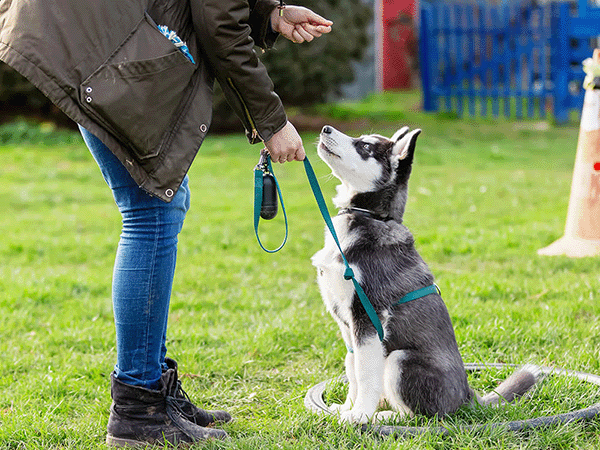
The Best Dog Trainers in the United States of 2025
This is a list of the top dog trainers in the United States, based on votes from the Sniffspot community and the general public.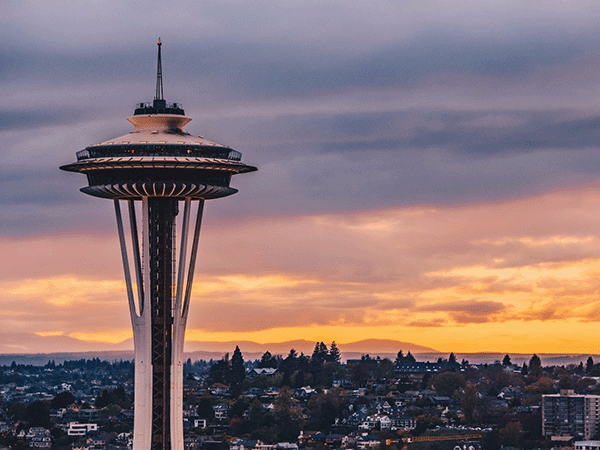
The Best Dog Trainers in Seattle, WA of 2025
This is a list of the top dog trainers in Seattle, WA, based on votes from the Sniffspot community and the general public.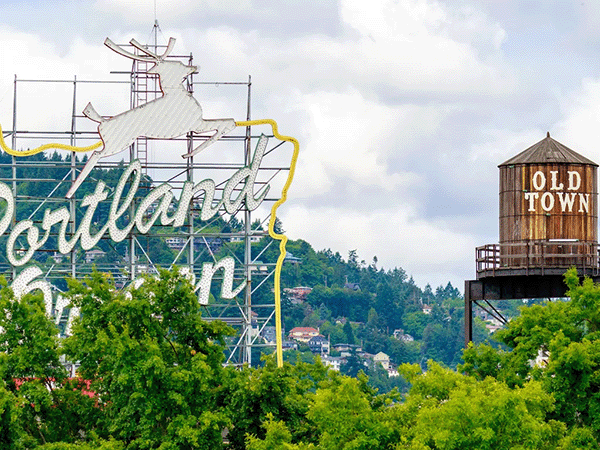
The Best Dog Trainers in Portland, OR of 2025
This is a list of the top dog trainers in Portland, OR, based on votes from the Sniffspot community and the general public.
The Best Dog Trainers in Los Angeles, CA of 2025
This is a list of the top dog trainers in Los Angeles, CA, based on votes from the Sniffspot community and the general public.
The Best Dog Trainers in New York, NY of 2025
This is a list of the top dog trainers in New York, NY, based on votes from the Sniffspot community and the general public.
City dog parks guides

Top 10 Indoor Dog Parks: A US Guide
Looking for a space to play with your dog no matter what the weather’s like outside? Look no further than our list of the best indoor dog parks in the United States! These climate-controlled spaces are growing in popularity as pet ownership increases throughout the country. As a bonus, many of them also offer dog training, boarding, grooming, or daycare services on the premises.

Best Dog Fields in the US: 25+ Wide-Open Spaces for Your Pup to Run Free
The best dog fields in the US offer something that traditional enclosed parks simply can't match: acres of open space where your pup can truly stretch their legs and run at full speed. From Colorado's 470-acre prairie meadows to Tennessee's award-winning "Outback," these wide-open spaces allow dogs to roam, explore, and exercise naturally while engaging instincts that cramped urban parks suppress.

Best Dog Parks in the US: Ultimate Guide to Public & Private Off-Leash Adventures
Is your pup giving you those pleading "let me run free" eyes? Whether you're a new dog parent or a seasoned pro looking for fresh adventures, finding the perfect off-leash paradise for your furry friend can feel ruff! From sun-soaked California beaches where your water-loving lab can make a splash to mountain trails in Vermont where your adventure buddy can chase every scent, we've sniffed out the 15 best dog parks across America.

Dog Parks Near Me: Las Vegas Edition
Looking for the perfect dog park near me in Las Vegas? You're in luck! This guide explores all the best options for your pup, from public dog parks to private dog parks near me on Sniffspot. We'll help you find the ideal spot for playtime, socializing, and fresh air. Plus, we'll cover essential etiquette and safety tips to ensure a happy visit for everyone. Get ready for some tail-wagging fun!

Top Sniffspot Locations: Find the Perfect Dog Park
Looking for the perfect dog park? Whether you need a wide-open public space or a private, fenced-in spot, this guide will help you find the best dog parks across the US. We'll cover top-rated public parks, the perks of private dog parks, and even explore Sniffspot locations – giving your pup a safe and fun place to play. Ready to find your dog's new favorite spot? Let's go!

Sniffspot: Portland's Best Private Dog Parks
Ready to discover Portland's best dog parks? Whether you're looking for a public park or the unique experience of a private Sniffspot, this guide has you covered. We'll help you find the perfect spot for your pup, with tips on what to bring, how to prepare, and even understanding dog body language. Plus, we'll explore some top Portland dog parks, including public and Sniffspot options, so you can plan your next dog-friendly adventure in the City of Roses.
Portland Dog Parks: Public & Private Options
This page is about public city dog parks and also includes Sniffspot private dog parks. Sniffspot is the largest network of private dog parks for rent in the world!
Small Dog Park Guide: Tips for Finding the Perfect Spot
Finding the perfect dog park for your small breed can be ruff! Big dog parks can be overwhelming, even dangerous, for little pups. This comprehensive guide helps you sniff out the best small dog parks for your pint-sized companion, covering everything from essential safety checklists to top recommendations for small dog parks across the US—including both public spots and private dog parks.
Dogs breeds

German Shepherd Guide: Best Family Dog? Truth from 9K Owners
The German Shepherd Dog (GSDs) are known for their intelligence, loyalty, and striking appearance. They're also incredibly versatile, excelling as working dogs and devoted family companions. This guide covers everything you need to know about GSDs, from understanding their unique traits and rich history to practical advice on training and care. So, whether you're a seasoned GSD owner or just starting your research, let's explore this remarkable breed together.

Best Dog Fields in the US: 25+ Wide-Open Spaces for Your Pup to Run Free
The best dog fields in the US offer something that traditional enclosed parks simply can't match: acres of open space where your pup can truly stretch their legs and run at full speed. From Colorado's 470-acre prairie meadows to Tennessee's award-winning "Outback," these wide-open spaces allow dogs to roam, explore, and exercise naturally while engaging instincts that cramped urban parks suppress.

Labrador Retriever: America's Best Family Dog? Owner Truth
Discover the Labrador Retriever, a breed celebrated for its playful nature, affectionate temperament, and trainability. Labradors are known for their friendly demeanor and adaptability, making them perfect family companions and versatile working dogs. As one of the most popular types of retrievers, Labs are ideal companions for various lifestyles and are recognized by the American Kennel Club (AKC) as an excellent breed for families.

Golden Retriever Advice: The Complete Owner's Guide
Golden Retrievers: they're gorgeous, playful, and incredibly popular. But before you welcome one into your home, you need the right golden retriever advice. This guide draws on the wisdom of nearly 10,000 Golden Retriever owners, offering practical tips for caring for these affectionate dogs. From understanding their high energy levels to mastering grooming and training, we'll cover everything you need to know. So whether you're already a devoted Golden parent or just starting your research, get ready to learn how to give your furry friend the best possible care.

Are American Staffordshire Terriers Good for First-Time Owners: Complete Guide
Think American Staffordshire Terriers are tough? Think again. While their muscular build might intimidate some, these dogs are known for their playful and loyal personalities. This guide draws on the experience of nearly 10,000 AmStaff owners to reveal the truth about this often misunderstood breed. Want to learn more about caring for an American Staffordshire Terrier? You're in the right place.

Australian Shepherd Facts: Breed Info & Care Guide
Discover the Australian Shepherd, an AKC breed celebrated for its trainable, playful, and affectionate nature. Despite its name, the Australian Shepherd is actually a native breed to the United States, originally developed to breed on farms and ranches. Considered a medium dog, Australian Shepherds were bred for herding beginning in the 1950s. As one of the high-energy breeds, Aussies are known for their boundless energy and need for regular exercise, including aerobic exercise.

Essential Husky Facts for Owners: Breed Guide
Discover the Siberian Husky, a breed celebrated for its curious, intelligent, and loyal nature. Considered a medium-sized dog, Siberian Huskies were originally bred in Russia for sledding, beginning in the early 20th Century. Today, they're one of the most popular active breeds in North America.










